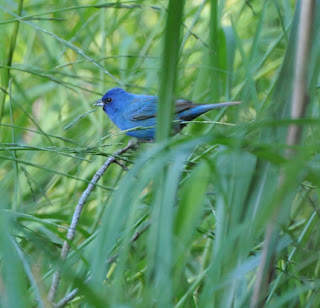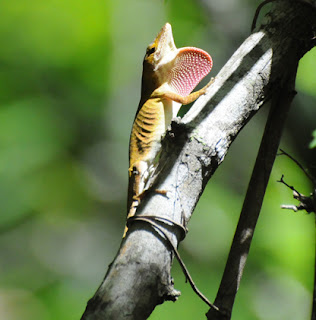You may have noticed that fireflies appear less abundant than in your childhood memories. Tonight, you have the opportunity to help scientist develop a picture of firefly populations across the Lowcountry. From the Clemson University webpage:
Firefly Survey Information
Firefly as Ecosystem Indicators – Environmental indicator is used to communicate information about ecosystems and the impacts of human activity to groups such as the public or government policy makers. The indicator can reflect a variety of aspects of ecosystems, including biological, chemical, and physical characteristics. The researchers at Clemson University are studying firefly as environmental indicator for the coastal South Carolina. The unique bioluminescence property of fireflies provide visual clues of environmental quality and are easy to measure and quantify by the general public.Fireflies are charismatic and reliable indicators of environmental health because their population density is correlated to the availability of healthy habitats (Kazama et al., 2009). A good firefly habitat is one that is moist, contains large amounts of natural organic matter (Wu and Perng, 2007). The habitat of fireflies is significantly impacted by urban development. For example, converting forested areas into open lawns, residential gardens, and agricultural field can change the structure of suitable habitats (Kazama et al., 2009; Juson et al., 2010). Indiscriminate use of insecticides in lawns and urban areas can kill many non-target insects, including fireflies. Pollution from commonly used chemicals (e.g., pesticides and fertilizer) and biological pollutants (e.g., pet waste) could also alter the quality of the habitat (Lee et al., 2008; Leong et al., 2007). Light can also be a source of pollution (Viviani et al., 2010). Strong, bright light can outshine firefly flashing and interfere with its mating behavior. All these factors work in concert to reduce the quantity and quality of habitat, thus reducing the density of fireflies. Therefore, the occurrence of firefly provides a visual clue on the quality of the natural environments.
References:
Kazama et al. 2007. Ecological Modeling 209: 392-400.
Wu and Perng 2007. Formosan Entomologist 27: 31-45.
Jusoh et al. 2010. Wetlands Ecology and Management 18: 367-373.
Viviani et al. 2010. Biota Neotropica 10” 103-116.
Procedure for the Survey
- You will enter your information into the online survey form page at this link
- Survey information should be from counts done on May 27th ONLY, from 8:15pm – 10:15pm
- Turn out all lights for at least one minute before counting (i.e. houselights, flashlights, headlights, etc.)
- Count the number of fireflies you see within 1 minute
- Please enter your observation by June 1. Results will be published on this web site on June 5.
- It is important to report your results even if no fireflies are observed. Your input is very useful to determine the land use on the occurrence and population of firefly.
- Below is the information you will record and enter into the online survey form
- Street Name
- City
- Zip Code
- Where did you see the fireflies?
Home lawn and gardens5. How many fireflies did you count within one minute?
Wood bordering lawn and garden
Farm
Forest
Others (please specify)
6. Other Comments
























































